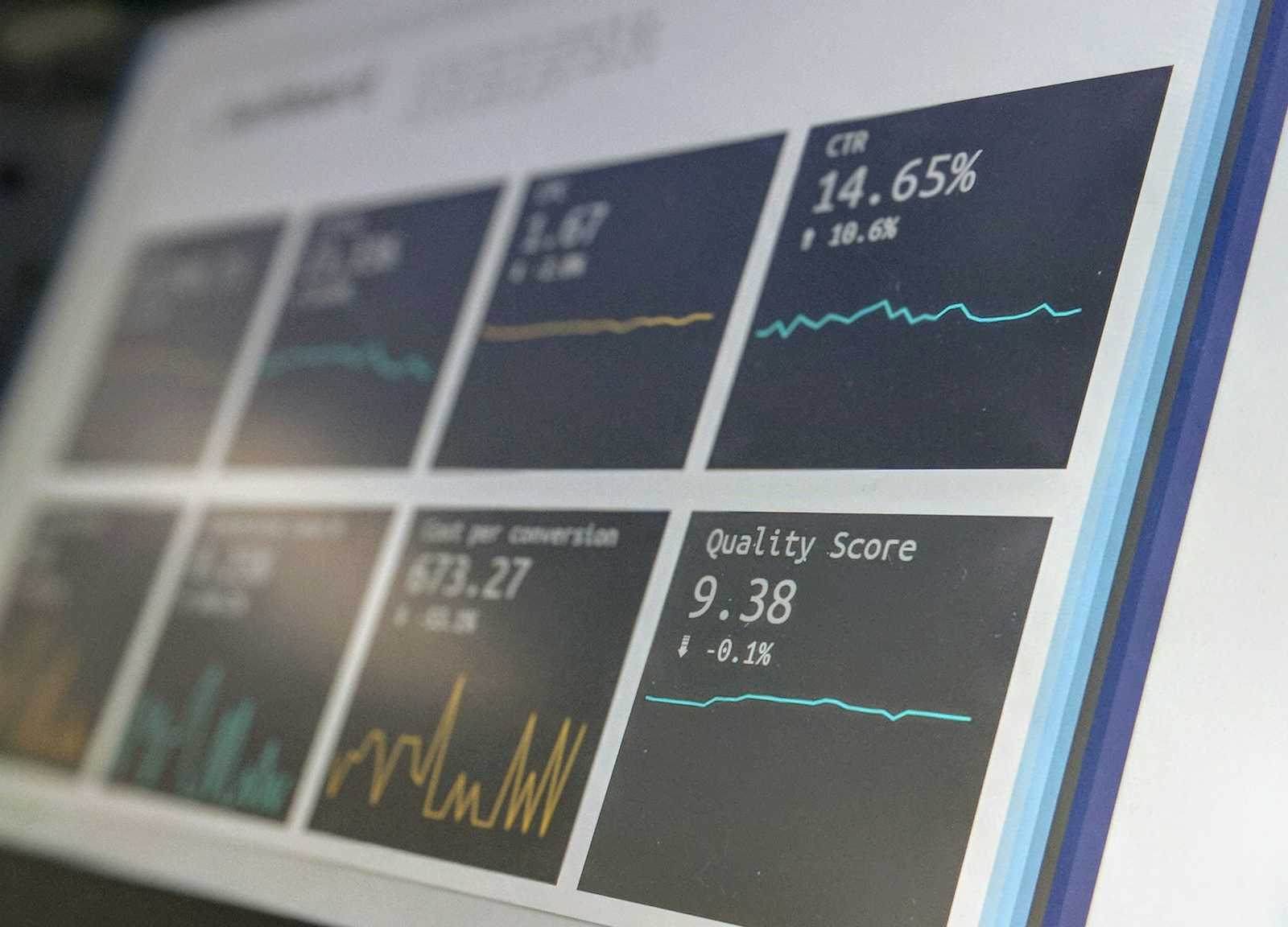Building Statistics PDF Reports as a Service
 Olena Yaroshenko
Olena Yaroshenko
1. Introduction: The Evolution of Data Analysis
In recent years, data analysis approaches have undergone a notable transformation. Businesses now have access to significant amounts of customer data, often reaching terabytes in size. Similarly, research organizations can explore expansive archives and survey data across various subjects. This growing availability of substantial data has paved the way for an entire industry focused on extracting valuable insights [1].
Data analysts face several challenges: consolidating fragmented data sources, cleaning and preparing the data, applying advanced analytical techniques, and compiling the results into compelling reports for stakeholders. We propose streamlining the reporting process using R and Knitr, a package for integrating code, outputs, and explanatory text into dynamic documents.
2. Knitr: A Tool for Dynamic Report Generation

Knitr is an R package that «provides a general-purpose tool for dynamic report generation in R using Literate Programming techniques» [2]. Literate programming, introduced by Donald Knuth, treats programming code as a form of literature comprehensible to humans and computers. It involves seamlessly integrating source code and documentation. With Knitr, users can extract or execute the source code to obtain compiled results.
The design of the Knitr package is sufficiently flexible to handle various text documents. It comprises three essential components: a source parser, a code evaluator, and an output renderer. The parser processes the source document, identifying code chunks and inline code. The evaluator executes the code and produces results, while the renderer formats the computed results appropriately. These formatted results are then combined with the original documentation [3].
Practical Applications and Benefits
Here are some examples of how the Knitr package can be used [4-6]:
Creating reproducible reports that seamlessly integrate text, code, and output within a unified document. This integration ensures that all essential information is included and updates in response to code or data modifications are seamless, which is beneficial for sharing analysis results with stakeholders;
Generating interactive documents that allow readers to modify the code and see the results in real time;
Combining R with other programming languages, such as Python or SQL, in R Markdown documents. This can be useful for leveraging the strengths of different languages in a single document;
Creating presentations and demonstrating concepts.
Overall, Knitr is a versatile tool that can be used in data analysis, research, and reporting workflows to ensure transparency, reproducibility, and effective communication of results.
The Knitr Workflow
The knitr-based workflow typically consists of three steps:
Writing the source document using markup language like Markdown or LaTeX, which includes text, code chunks, and output placeholders.
Processing the source document with the knitr engine, which executes the code chunks and includes the results.
Converting the processed document into the desired output format (e.g., PDF, HTML, Word) using a tool like Pandoc.
3. Markup Language Options: Markdown vs. LaTeX
While RMarkdown and LaTeX are used to create reproducible documents in R, they have distinct characteristics. Markdown is a lightweight markup language that allows formatting plain text documents using simple, human-readable syntax. It is designed to be easy to write and read and can be converted into various formats like HTML and PDF. Markdown is commonly used for creating documentation, blog posts, README files, and other text-based content that requires formatting without the complexities of a full-fledged word processor.
LaTeX is a typesetting system often used to create complex documents, especially those requiring mathematical or technical notation. It's based on the TeX typesetting system and allows precise control over document layout, typography, and formatting. LaTeX documents are written using a markup language that defines the structure and formatting of the document and is widely used in academia.
Considering LaTeX's ability to produce visually precise PDF documents, the robustness of the tidyverse R packages for creating customized charts, and the potential of Sweave (an extension enabling seamless integration of R code and its output within LaTeX documents), the choice of LaTeX for generating comprehensive PDF reports becomes evident.
4. System Architecture and Implementation
A representation of a system that allows the user to create reproducible research documents by combining R code and text and then converting it to a PDF file is shown in Figure 1.
Figure 1. The flow of data and actions between different components in a system
The graph has several nodes, each representing a different component in the system:
client: The user or application that initiates the request;
server: The backend system that handles the request and stores the data;
API Endpoint: The endpoint that the client interacts with to access the server's functionality;
function or Script: The code that runs on the server to perform a specific task or return data;
knitr: A tool used to convert LaTeX documents into PDF;
LaTeX Document: A document that includes both text and R code;
PDF: The final output of the system, a portable document format file.
The graph's edges show the flow of data and actions between the different nodes.
The client sends a request to the API endpoint.
The API endpoint routes the request to the appropriate function or script.
The function or script runs on the server and returns data to Knitr.
The R Markdown or LaTeX document is processed by the Knitr tool, and the final output is a PDF file.
The PDF file is sent back to the server.
The server sends the PDF file to the client.
This proposed service leverages the power of R, knitr, and LaTeX to offer a streamlined and efficient approach to generating comprehensive statistical PDF reports.
5. Considerations and Future Directions
However, it's important to note that while this architecture presents a robust solution, its successful implementation heavily relies on the organization's existing infrastructure, data management practices, and the expertise of its technical team. Effective integration, security measures, and ongoing maintenance are crucial factors to consider.
Furthermore, as the volume and complexity of data continue to grow exponentially, this system may require continuous enhancements and scalability measures to keep pace with evolving organizational needs. Embracing emerging technologies, such as cloud computing and advanced data visualization techniques, could further augment the system's capabilities and provide a competitive edge.
Ultimately, by combining the strengths of data analysis, reproducible research, and cutting-edge reporting tools, this service has the potential to revolutionize how organizations derive value from their data assets, fostering a culture of data-driven decision-making and driving innovation across various sectors.
REFERENCES
Kabacoff, Robert. 2015. R in Action: Data Analysis and Graphics with R. Shelter Island, NY: Manning Publications.
Xie, Y. (2023). Knitr: A General-Purpose Package for Dynamic Report Generation in R. https://cran.r-project.org/web/packages/knitr/knitr.pdf
Xie, Y. (2015). Dynamic Documents with R and Knitr (2nd ed.). Chapman and Hall/CRC. https://doi.org/10.1201/b15166
Xie Y (2014). “Knitr: A Comprehensive Tool for Reproducible Research in R.” In Stodden V, Leisch F, Peng RD (eds.), Implementing Reproducible Computational Research. Chapman and Hall/CRC. ISBN 978-1466561595.
Baumer, B., Cetinkaya-Rundel, M., Bray, A., Loi, L., & Horton, N. J. (2014). R Markdown: Integrating A Reproducible Analysis Tool into Introductory Statistics. Technology Innovations in Statistics Education, 8(1). http://dx.doi.org/10.5070/T581020118 Retrieved from https://escholarship.org/uc/item/90b2f5xh
Gandrud, C. (2015). Reproducible Research with R and Studio (2nd ed.). Chapman and Hall/CRC https://doi.org/10.1201/9781315382548
Subscribe to my newsletter
Read articles from Olena Yaroshenko directly inside your inbox. Subscribe to the newsletter, and don't miss out.
Written by

Olena Yaroshenko
Olena Yaroshenko
Associate Professor with a Ph.D. in Economics specializing in AI and Data Science. Over 20 years of experience in data analysis and machine learning, with a proven track record of developing AI-powered systems and statistical frameworks.